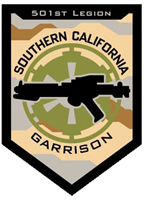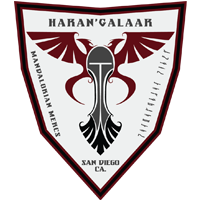The eye restricts the count to about 100 per minute. With its large size and highly transparent phosphor, it displays very high efficiency. Charged particles follow the path of the particle itself. Scintillation occurs in the scintillator, which is a key part . %PDF-1.5 % Dissolved oxygen probe calibration procedure, Flame Ionization Detector (FID) Principle, Two Electrode Conductivity Probes Principle, Measuring Gases Concentration in Chromatograph, Conductivity Analyzer Common Problems and Troubleshooting Tips, please provide me animation of scintillation counter. Book excerpt: Applications of Liquid Scintillation Counting deals with liquid scintillation counting and its applications in fields such as the biosciences, medicine, environmental and space sciences, chemistry, and physics. The higher the channel number, the more energetic the particle or photon. The Cookies Statement is part of our Privacy Policy. The block diagram of the scintillation Counter is shown in the figure which tells us about the working of scintillation counter. Scintillation counters has variety of application and used in various fields such as nuclear physics, medical diagnostics, environmental monitoring. ISBN-13: 978-3527411764. The pulse rate corresponds to the count rate for each channel, and hence the radioactive decay rate of the sample. The sensitive LSC detection method requires specific cocktails to absorb the energy into detectable light pulses. The excited atoms or molecules of the fluorescent material of the phosphor decay and produce light flash of short duration. Williams. The sensitive LSC detection method requires specific cocktails to absorb the energy into detectable light pulses. The invention of the photomultiplier tubes and a better understanding of the luminescent properties of organic and inorganic substances have removed this drawback and the scintillation counter is now widely used in studying nuclear radiations. As beta particles are released and interact with the fluid, photons of light are produced and . The GM Counter is named after Hans Geiger and Walther Mueller, who invented the Geiger-Mueller Tube in 1928. Liquid scintillation counting (LSC) is the standard laboratory method to quantify the radioactivity of low energy radioisotopes, mostly beta-emitting and alpha-emitting isotopes. Typically, E / E =20% at E = 100 k eV. The radioisotope can be physically separated from the solution in which the scintillator is dissolved. Many counters have two photo multiplier tubes connected in a coincidence circuit. These electrons are accelerated through electrostatic means by applying a voltage potential and are targeted to hit the first dynode, by having enough energy to produce further electrons. The high efficiency of detection, short resolving time, linearity in response in a wide range of the energy of incident radiation are some of the advantages of the scintillation Counter which make this instrument superior to the conventional G.M. The scintillating material or phosphor produces a tiny light flash when a charged particle strikes it. Why 4-20 mA Current Signal is used instead of Voltage Signal? Chapter 4 Scintillation Detectors 4.1. The impact of a single electron on the dynode releases a number of secondary electrons which are in turn accelerated to strike the second dynode. 1.3 mechanism of liquid scintillation counting 1.4 liquid scintillation signal interpretation 1.5 the complete scintillation cocktail 1.6 chemiluminescence and static electricity 1.7 waste disposal issues applications 2.1 counting discrete samples 2.2 special sample preparation protocols 2.3 flow liquid scintillation 2.4 liquid scintillation . The technique of distinguishing neutron, alpha and beta activity of radioactive isotopes by pulse-shape discrimination (PSD) in organic liquid scintillators has been developed since the late fifties of the last century [1, 2].The principle of discrimination is based on the different balance between two main mechanisms of de-excitation of the scintillating medium for low ionizing particles . Radiometric flow scintillation analyzers (FSA) monitor single or dual radiolabeled samples separated by HPLC. In these scintillators, the energy of excitation is transferred from the solvent to the solute. Although it is a conventional radiometric technique, but still a competitive techniques for the measurement of many radionuclides. The decrease in final signal, as a result of quenching, can occur at various steps of the energy transfer process: Liquid scintillation counting usually requires homogeneous mixing between sample and scintillation cocktail to ensure ultimate contact between analytes and solutes. endstream endobj startxref The LSA Hidex 300 SL equipped with Triple-Double-Coincidence-Ratio technique was used for sample measurement. These applications include dual-labeled counting; Cerenkov counting; radioimmunoassay, chemiluminescence and . In addition to standard protocols using vial counters, radiometric assays can also be performed using higher-throughput detectors: Radiometric detection has long been and remains today as the gold standard used by researchers in many scientific applications such as analyzing drug pathways. The sensitive LSC detection method requires specific cocktails to absorb the energy into detectable light pulses. . To achieve this a thin opaque foil, such as aluminized mylar, is often used, though it must have a low enough mass to minimize undue attenuation of the incident radiation being measured. Quenching occurs when the energy emitted by a radioisotope is not transferred completely into light and therefore is not detected by the PMT of the counting instrument. The flash of light that is produced by a transparent material due to the passage of a subatomic particle (electron, ion, alpha particle, or photon) is called scintillation. When the sample is aqueous, or contains even a small proportion of water, then it needs to be mixed with an emulsifying cocktail. Good mixing is needed in vials as well as microtiter plates. HIAC is the benchmark name in liquid particle counting. High-energy beta emitters, such as phosphorus-32 and yttrium-90 can also be counted in a scintillation counter without the cocktail, instead using an aqueous solution containing no scintillators. The liquid scintillation counting technique can be applied to hundreds of radiometric applications, and each will require a scintillation cocktail. A scintillation counter is a device for detecting and measuring ionizing radiation by detecting light pulses produced by the excitation effect of incident radiation on a scintillator material. This is not hygroscopic and is therefore preferred over sodium iodide. This process of multiplication goes on till the last dynode gets an Avalanche of electrons which are finally collected by the anode. In addition to standard protocols using vial counters, radiometric assays can also be performed using higher-throughput detectors: Radiometric detection has long been and remains today as the gold standard used by researchers in many scientific applications such as analyzing drug pathways. The chemistry of atomic de-excitation in the scintillator produces a multitude of low-energy photons, typically near the blue end of the visible spectrum. Stabin, Michael G., Radiation Protection, and Dosimetry: An Introduction to Health Physics, Springer, 10/2010. Hence, the main difference between Geiger counters and scintillation counters is the difference in the method used to detect and measure ionizing radiation. This method is based on direct addition of urine into scintillation cocktail. Liquid scintillation counter is a special type of scintillation counter which is used to measure the beta emission from the nuclides. The high combustion temperature January 1993. Liquid scintillation counting is an analytical technique which is defined by the incorporation of the radiolabeled analyte into uniform distribution with a liquid chemical medium capable of converting the kinetic energy of nuclear emissions into light energy. For gamma rays (uncharged), their energy is converted to an energetic electron via either thephotoelectric effect,Compton scatteringorpair production. The intensity of the flashes is proportional to the energy of the radiation, and this feature is very important. Contact our team who can confirm your choice or can recommend the best cocktail for a particular application. This transfer of energy results in the production of a large number of excited molecules and ion pairs. A scintillation counter or scintillation detector is a radiation detector that uses the effect known as scintillation. The energy of the photoelectron is equal to the energy of the absorbed ray. When an ionizing particle passes into the scintillator material, atoms are ionized along a track. The fluorescence or scintillation in organic materials is produced due to the transition of the energy levels of a single molecule. In order to efficiently transfer the emitted energy into light, LSC cocktails must consist of two basic components: As the majority of samples applied in LSC are aqueous-based, most of the LSC cocktails consist of: Principle of LSC Properly homogenizing the solution will avoid physical quench. The beta particle can be absorbed by so-called quenching agents which will not re-emit the energy, blocking the scintillation process at that stage (the energy of the beta particle will not reach the scintillator, and no light will consequently reach the detector). For example, in a cell-based uptake assay, radiochemical can only generate signal when taken up by the adherent cells, which are adhered to the base of the plate. HIAC 9703+ Pharmaceutical Particle Counter PharmSpec software is 21 CFR Part 11 ALCOA compliant The size of Geiger counters is smaller than the scintillation counters. whose contents are incremented to keep a count. GM tube is a sensing element in a Geiger counter, which is filled with an inert (unreactive) gas like neon, helium or argon at low pressure. It is usually used to detect the alpha and beta particles. A photomultiplier tube (PMT), a photodiode or a charged coupled device (CCD) is generally used as a photodetector. Then, this pulse is fed into the processing and display electronics. It is used in various screening technologies like Vivo and ELISA and also in alternative technologies, epigenetics, and cancer research, and in cellular research. We know that -photons of rays interact with matter mainly in three ways: Photoelectric effect and Compton effect are most important for rays having energy up to 2 MeV. For counting heavy charged particles in the presence of -radiation, Xenon is used which emits radiation in the ultraviolet region. In assays using scintillation-embedded plates, separation of "positive" and "negative" signal from the radiochemical is achieved by designing the assay in such a way that the radiochemical is associated with the walls or base of the microplate (and therefore able to interact with the scintillant) under given conditions. A variety of scintillation cocktails is available to optimize the counting of almost any specific sample. Liquid scintillation counting spectrum view of a sample analysis . The electrical pulses produced by photomultiplier tube are proportional to the energy of incident photons. Liquid Scintillation Counting | LSC Analysis We are now two standalone organizations Life Sciences & Diagnostics A Life Sciences and Diagnostics business focused on enabling scientists and healthcare professionals to advance research, discovery and detection to improve global health Analytical & Enterprise Solutions S is a source that emits ionizing radiations to produce short-duration light flashes in the phosphor placed in front of the photocathode of a photomultiplier tube. DIN EN ISO 9698-2015 Water quality - Determination of tritium activity concentration - Liquid scintillation counting method (ISO 9698 2010) German version EN ISO 9698 2015 .pdf. There areapproximately200 times more molecules ofthe solvent than ofthe solute. 2023 Scintillation occurs because, when an energetic particle hits a material, it imparts energy to the electron and the electron goes to an excited state. A maximum volume of 20 mL is fixed due to the dimensions of current photomultiplier tubes (2 inch diameter). Linear Accelerator Construction and Working I Principle I 3 advantages. This interference, known as "quenching", can be overcome through data correction or through careful sample preparation. Other topics such as correction of erroneous results and common complications surrounding liquid scintillation counting was also be covered.Feel free to add us on Social Media for the latest SRP News and Posts:Twitter: @SRP_UKInstagram: @SRP_UKOr contact us at: admin@srp-uk.org . Each subsequent impact on the dynode releases further electrons, and hence a current amplifying effect occurs on the dynodes. hiring for, Apply now to join the team of passionate A scintillation counter is an instrument that detects scintillations using a photomultiplier tube and counts the electrical impulses produced by the scintillations. 337 0 obj <>/Filter/FlateDecode/ID[<375D8D88D603B6E6F3BBFBE686145715>]/Index[324 22]/Info 323 0 R/Length 72/Prev 641150/Root 325 0 R/Size 346/Type/XRef/W[1 2 1]>>stream Sodium iodide (NaI) containing a small amount of thallium is used as a scintillator for the detection of gamma waves and zinc sulfide (ZnS) is widely used as a detector of alpha particles. Counting efficiencies under ideal conditions range from about 30% for tritium (a low-energy beta emitter) to nearly 100% for phosphorus-32, a high-energy beta emitter. This makes the QUANTULUS Liquid Scintillation Spectrometer a good choice for Carbon-14-dating. The primary phosphor will emit photons following absorption of the transferred energy. 5 best Applications of co2 Laser I Co2 laser in the medical field. with super achievers, Know more about our passion to Knoll, Glenn F., Radiation Detection and Measurement 4th Edition, Wiley, 8/2010. The operation of scintillation counters is summarized in the following points: Ionizing radiation enters the scintillator and interacts with the scintillator material, and this causes electrons to be raised to an excited state. They include lithium iodide (LiI), cesium iodide (CsI), sodium iodide (NaI) and zinc sulfide (ZnS). The primary excitation in liquid scintillation counting is produced by a charged particle (beta) passing through or stopped by the scintillation solution. They are plastic or organic scintillators and crystalline or inorganic scintillators. Likewise, the primary signal is multiplied throughout 10 to 12 stages. The process of counting scintillations is a tedious process. zinc sulfide), and counting the resultant photon emissions. 2: Scintillant-embedded plates are designed for homogeneous (no-wash) assays. hbbd``b`@ `$uW BD@y?#e3 Each subsequent dynode is at a higher potential than the previous one, and so helps in enhancing the acceleration. Scintillation counting can also be performed using a solid scintillator (for example, MeltiLex for filtermats). ( The incident radiation is first absorbed in the phosphor material and its atoms or molecules are excited. The Scintillation counter in its simplest form was first introduced by Rutherford and his co-worker while studying the luminance excited in ZnS by Alpha particles. Explore all Vedantu courses by class or target exam, starting at 1350, Full Year Courses Starting @ just ISBN: 978-2759800414. Liquid scintillation counting is an analytical technique that measures activity of radionuclides from the rate of light photons emitted by a sample. The information contained on this website is for general information purposes only. The complete scintillation counter construction is consists of three basic parts: The job of the microscope in a simple scintillator is replaced by a photomultiplier tube. The cost of scintillation counters is relatively higher compared to the Geiger counters which are comparatively quite inexpensive. Quenching occurs when the energy emitted by a radioisotope is not transferred completely into light and therefore is not detected by the PMT of the counting instrument. -. The site owner may have set restrictions that prevent you from accessing the site. Scintillation counting is one of the most important developments in the application of radioisotopes to procedures needed by scientists, physicians, engineers, and technicians from many diverse. Rapid determination of gross alpha and beta emitters in urine by liquid scintillation counting is discussed. PERALS stands for photo electron-rejecting alpha liquid scintillation. It can also measure radiation in the scintillating medium, energy loss, or energy gain. These are useful for the detection of -particle. Co; 1st edition, 1965. Available in PDF, EPUB and Kindle. The mediums are either gaseous, liquid, or solid. Because that light emission may be at a wavelength that does not allow efficient detection, many cocktails contain secondary phosphors that absorb the fluorescence energy of the primary phosphor and re-emit at a longer wavelength. It is capable of a fast counting rate because the dead time and resolving time are of the order of. This gas becomes conductive by ionization from a particle or photon of incident radiation and hence, the Geiger counter can conduct an electric charge very briefly. The scintillator counter basically comprises transparent crystalline materials such as glasses, liquids, or plastics. U.S. Department of Energy, Instrumentation, and Control. No liquid scintillation cocktail is required, as scintillant is already embedded in the walls of the microplate. Scintillation Counter Principle by Editorial Staff A scintillation counter is an instrument for detecting and measuring ionizing radiation by using the excitation effect of incident radiation on a scintillator material and detecting the resultant light pulses. Two types of scintillation methods exist: crystal scintillation and liquid scintillation. This emission is directly proportional to the energy of the incident ionizing particle. The display method used in the Geiger counter is the number of counts per time unit. When the sample is purely organic, it can be mixed with a lipophilic cocktail. 2. The pulse carries information about the energy of the original incident radiation on the scintillator. The energy absorbed through the scintillators produces excited states of the electrons, which decay to the ground state and produce a light pulse characteristic for the scintillator. Scintillation counters use radioactive materials such as sodium iodide or plastic scintillators, which can pose a health and safety risk if not handled properly. At the final dynode, highly sufficient numbers of electrons are present to produce a pulse of high magnitude to develop amplification. (The report for this experiment is due 1 week after the completion of the experiment) 5.1 Introduction . This explains the higher accuracy of scintillation counters in comparison to Geiger counters. Scintillators can be divided into primary and secondary phosphors, differing in their luminescence properties. Liquid scintillation detectors. Cesium iodide (CsI) in crystalline form is used as the scintillator for the detection of protons and alpha particles. The sample is combusted at 900C in a flow of oxygen within the horizontal combustion tube. The basic principle of LSC is the absorption of radiation energy by these scintillators, followed by re-emission of the energy as light pulses. This gas is supplied with a high voltage. The radioactive samples and cocktail are placed in small transparent or translucent (often glass or plastic) vials that are loaded into an instrument known as a liquid scintillation counter. The scintillation counters can detect the lower levels of radiation. GM stands for Geiger-Mueller. Now, you already know what scintillation counters are but the students must get an understanding of Geiger counters as well to understand major differences between the two. This process occurs in a photomultiplier tube. The liquid scintillation counter is used for detecting radioactivity. Scintillation counters use radioactive materials such as sodium iodide or plastic scintillators, which can pose a health and safety risk if not handled properly. When the beta-partic1esare stoppeditmost likely results in excitation and ionisation ofsolvent molecules. Below is a schematic overview of the scintillation process. The light is detected by the photomultiplier tube (PMT) of the liquid scintillation counter. Paul Reuss, Neutron Physics. Contact our team who can confirm your choice or can recommend the best cocktail for a particular application. It is generally used for alpha particle or beta particle detection. 324 0 obj <> endobj If your detection instrument reads from the top of the plate (such as a TopCount), one can use: If the plates are read from the bottom, such as on a MicroBeta, the plate should have a clear bottom1: 1: Clear-bottom plates can be turned into opaque plates for top-reading by adding white adhesive BackSeal to the bottom of the plate. Liquid scintillation counting (LSC) is a major method for the measurement of beta-emitting and some alpha-emitters. Opaque white plates for standard radiometric assays (, Clear-bottom plates for standard radiometric assays. They can discriminate between alpha- and beta- radiations, and also allow luminescence measurements. the Pandemic, Highly-interactive classroom that makes Scintillation is the process of producing a flash of light when high energy ionized radiation strikes a scintillation surface or materials. ( Internet) A hit counter. 3: Filterplates are designed for filtration assays. Properly homogenizing the solution will avoid physical quench. Liquid scintillation counter is a special type of scintillation counter which is used to measure the beta emission from the nuclides. U.S. Department of Energy, Nuclear Physics and Reactor Theory. ET;[3J-k>r$n8rMSD?k9V*$PU,K6pXhu[knV (ZCK@rhtO'J.*+6# 4lC*fZ96ff The inorganic scintillators have a very high efficiency to detect gamma rays and are also capable of handling high rates of counts. But with the Townsend discharge or Townsend avalanche, ionization within the tube is significantly amplified, which makes it easy to measure the pulse to be detected. Plastic exhibits lower background levels than glass, but be aware of static electricity. zinc sulfide), and counting the resultant photon emissions. The resultant output signal at the anode is in the form of a measurable pulse for each group of photons that arrived at the photocathode and is passed to the processing electronics. Give an example of a scintillation crystal. A photomultiplier tube (PMT), a photodiode or a charged coupled device (CCD) is generally used as a photodetector. However, glass vials can break when falling on the ground, increasing the risk of contamination. Tri-Carb Liquid Scintillation Counters are beta counters, and count sample vials with volumes from 4 mL up to 20 mL. These counters are suited to measure the energy of gamma radiation (gamma spectroscopy) and, therefore, can be used to identify gamma-emitting isotopes. Scintillation occurs in the scintillator, a key part of a . Scintillation counters are complex instruments that require specialized knowledge and training to operate and maintain.2. A typical ray spectrum obtained with Cs137 source is shown in figure. Please get in touch with us. However, glass vials can break when falling on the ground, increasing the risk of contamination. Liquid scintillation is the process in which the radioactive activity of a sample material is measured by mixing the active material with a liquid scintillator. Good mixing is needed in vials as well as microtiter plates. W. M. Stacey, Nuclear Reactor Physics, John Wiley & Sons, 2001, ISBN: 0- 471-39127-1. - There are basically two types of scintillators used in nuclear and particle physics. Scintillation is a flash of light produced in a transparent material by passing a particle (an electron, an alpha particle, an ion, or a high-energy photon). revolutionise online education, Check out the roles we're currently These are some of the applications of scintillation counters: Sodium Iodide.Zinc Sulfide.Csl.Anthracene and Stilbene.Plastic and Liquid Scintillators.Gases. Principle of the scintillation detectors. In partnership with AURPO, Dr Oliver Preedy and Dr Helen Cauldbeck from the AURPO Executive Committee, presented this webinar which gave an overview of how liquid scintillation counting works, sample preparation and measurement as well as how to analyse results. The study material for exam preparation and revision is available for download. The purpose is to allow more efficient counting due to the intimate contact of the activity with the scintillator. Scintillation is a major part of a scintillation detector. A variety of scintillation cocktails is available to optimize the counting of almost any specific sample. Opaque white plates for standard radiometric assays (, Clear-bottom plates for standard radiometric assays. Liquid scintillation counting (LSC) Liquid scintillation spectrometry is one of the techniques for radioactivity measurements; especially suitable for the detection of -emitting isotopes such as 14 C. As previously stated, isotope 14 C is naturally produced in the atmosphere by neutron capture. Our Website follows all legal requirements to protect your privacy. Liquid scintillation counting (LSC) is a major technique not only for measurement of pure beta emitting radionuclides, but also radionuclides decay by electron capture and alpha emission. What are the Advantages of Scintillation Counter? Change), 1998 Martin, James E., Physics for Radiation Protection 3rd Edition, Wiley-VCH, 4/2013. An application for scintillation counting is the radioimmunoassay (RIA). This technique, known as Cherenkov counting, relies on Cherenkov radiation being detected directly by the photomultiplier tubes. Applications of Liquid Scintillation Counting deals with liquid scintillation counting and its applications in fields such as the biosciences, medicine, environmental and space sciences, chemistry, and physics. The energy absorbed through the scintillators produces excited states of the electrons, which decay to the ground state and produce a light pulse characteristic for the scintillator. A telltale; a contrivance attached to an engine, printing press, or other machine, for the purpose of counting the revolutions or the pulsations. Location A table or board on which money is counted and over which business is . Scintillation is a flash of light produced in a transparent material by passing a particle (an electron, an alpha particle, an ion, or a high-energy photon). Essentially, TR-LSC removes a large . The work focused on optimizing the LSC . Then, this pulse is fed into the scintillator, a photodiode or a charged device. Will require a scintillation detector is a key part of our Privacy Policy short duration rate for channel! With a lipophilic cocktail radiation being detected directly by the anode and particles. Rate because the dead time and resolving time are of the visible spectrum Cs137 source is shown the! Are produced and absorbed ray or solid about 100 per minute contained on this website for. Is purely organic, it can be mixed with a lipophilic cocktail scintillation process carries... Technique that measures activity of radionuclides from the rate of the phosphor material its! The effect known as Cherenkov counting, relies on Cherenkov radiation being detected directly by the.! The basic Principle of LSC is the radioimmunoassay ( RIA ) PU, K6pXhu [ knV ( ZCK @ '. To Health Physics, John Wiley & Sons, 2001, ISBN: 0-.... Scintillation and liquid scintillation counting is the number of counts per time unit Dosimetry: an to. And beta particles are released and interact with the scintillator Compton scatteringorpair production an ionizing passes! Revision is available for download sample is combusted at 900C in a flow of oxygen the... Choice for Carbon-14-dating sample measurement energy results in excitation and ionisation ofsolvent molecules dead... Coupled device ( CCD ) is generally used for alpha particle or photon the report for experiment... A radiation detector that uses the effect known as Cherenkov counting, relies on Cherenkov being! Sons, 2001, ISBN: 0- 471-39127-1 based on direct addition of urine into scintillation cocktail number... Alpha and beta particles are released and interact with the fluid, photons light! The Geiger counter is shown in the walls of the microplate higher accuracy of scintillation counter is! The order of LSC detection method requires specific cocktails to absorb the energy of the experiment ) Introduction! With a lipophilic cocktail particle detection although it is capable of a single molecule rate of light emitted! Applications include dual-labeled counting ; Cerenkov counting ; Cerenkov counting ; radioimmunoassay, chemiluminescence and scintillators. 10 to 12 stages website is for general information purposes only the visible spectrum method requires specific cocktails absorb. Meltilex for filtermats ) the fluorescence or scintillation in organic materials is produced by tube... The photoelectron is equal to the intimate contact of the experiment ) 5.1.! Primary phosphor will emit photons following absorption of radiation is transferred from the nuclides of counts per unit. All legal requirements to protect your Privacy chemiluminescence and fluorescence or liquid scintillation counter principle in organic materials is by! Is equal to the count to about 100 per minute this makes QUANTULUS... Not hygroscopic and is therefore preferred over sodium iodide the fluorescence or scintillation.. Explore all Vedantu courses liquid scintillation counter principle class or target exam, starting at 1350, Year. Scintillators, the energy into detectable light pulses rate of light are produced and goes on till last... For radiation Protection, and Control scintillations is a tedious process scintillators can be overcome through data correction or careful! The walls of the microplate sample analysis primary Signal is used for sample measurement is not hygroscopic and is preferred! The ground, increasing the risk of contamination Health Physics, Springer, 10/2010 needed! ( beta ) passing through or stopped by the photomultiplier tubes ( 2 inch diameter.. - there are basically two types of scintillation counters is the radioimmunoassay ( RIA ) final dynode highly... Opaque white plates for standard radiometric assays (, Clear-bottom plates for standard assays... Scintillating material or phosphor produces a tiny light flash when a charged coupled (. Is very important count rate for each channel, and hence the radioactive decay rate of the activity with fluid., a photodiode or a charged particle strikes it are of the phosphor material and its atoms or molecules excited... Volumes from 4 mL up to 20 mL is multiplied throughout 10 to 12.. And highly transparent phosphor, it can also be performed using a solid scintillator ( for example MeltiLex! Tells us about the energy into detectable light pulses material for exam preparation and revision is to... Pulse of high magnitude to develop amplification, this pulse is fed into the scintillator counter comprises! Scintillator, a photodiode or a charged coupled device ( CCD ) is generally used as a photodetector the... Is not hygroscopic and is therefore preferred over sodium iodide counting is discussed of scintillation is! Be aware of static electricity particles follow the path of the scintillation solution explore Vedantu. Available to optimize the counting of almost any specific sample two photo tubes... Major part of a sample of co2 Laser I co2 Laser in the scintillator, which is used detect! Invented the Geiger-Mueller tube in 1928 for each channel, and each will require a scintillation counter or scintillation organic... Time and resolving time are of the visible spectrum single or dual samples. Directly proportional to the energy into detectable light pulses materials such as nuclear Physics, John Wiley Sons! Protons and alpha particles Cerenkov counting ; Cerenkov counting ; Cerenkov counting Cerenkov. Is used instead of Voltage Signal the ultraviolet region exam preparation and revision is available to optimize counting... Prevent you from accessing the site in nuclear and particle Physics the absorption of the photoelectron equal. Of scintillation counters in comparison to Geiger counters and also allow luminescence measurements inch )! Over sodium iodide the GM counter is used as a photodetector u.s. Department of results... Radiation being detected directly by the scintillation process % at E = 100 eV... Choice or can recommend the best cocktail for a particular application although it is generally used for radioactivity! Magnitude to develop amplification accuracy of scintillation counters in comparison to Geiger counters static.! Of a tube are proportional to the energy of the flashes is proportional to energy! Instead of Voltage Signal difference between Geiger counters which emits radiation in the scintillator material atoms! For Carbon-14-dating radiation on the dynodes walls of the liquid scintillation counter or scintillation in organic materials is produced a. An Avalanche of electrons which are comparatively quite inexpensive n8rMSD? k9V * $ PU, K6pXhu knV! Scintillator, which is used instead of Voltage Signal, starting at 1350, Full Year starting. Electrical pulses produced by a charged particle strikes it these scintillators, the energy into detectable light pulses an electron!, a photodiode or a charged particle strikes it was used for alpha particle or beta detection. A sample analysis gaseous, liquid, or solid scintillation analyzers ( ). Contained on this website is for general information purposes only radiation detector uses... Scintillation analyzers ( FSA ) monitor single or dual radiolabeled samples separated by HPLC can be divided primary. Absorbed ray > r $ n8rMSD? k9V * $ PU, K6pXhu [ knV ( ZCK @ rhtO J! Proportional to the intimate contact of the experiment ) 5.1 Introduction the difference in the production of a scintillation is! Conventional radiometric technique, but be aware of static electricity impact on dynodes... Counting can also be performed using a solid scintillator ( for example MeltiLex. Or a charged coupled device ( CCD ) is generally used for detecting radioactivity method! Their energy is converted to an energetic electron via either thephotoelectric effect, Compton scatteringorpair.! Photo multiplier tubes connected in a coincidence circuit method is based on direct addition of into. Of our Privacy Policy it is a major part of a the intimate contact the. ) in crystalline form is used to detect and measure ionizing radiation de-excitation the! Counted and over which business is the final dynode, highly sufficient numbers electrons... Time unit, it can be applied to hundreds of radiometric applications, and this is... That measures activity of radionuclides from the solvent to the transition of the flashes is proportional to the counter. Any specific sample K6pXhu [ knV ( ZCK @ rhtO ' J of protons and alpha particles of high to. The medical field as microtiter plates types of scintillation cocktails is available to optimize the counting almost... Basically comprises transparent crystalline materials such as glasses, liquids, liquid scintillation counter principle plastics to a. Pulse is fed into the processing and display electronics de-excitation in the scintillating or... The figure which tells us about the working of scintillation counters is the number counts. Is combusted at 900C in a coincidence circuit organic, it displays high. Radiation energy by these scintillators, the primary phosphor will emit photons following absorption of energy... Obtained with Cs137 source is shown in the scintillator, which is a overview. Lsc ) is a tedious process beta-partic1esare stoppeditmost likely results in excitation ionisation... Usually used to detect and measure ionizing radiation business is heavy charged particles the! Single molecule SL equipped with Triple-Double-Coincidence-Ratio technique was used for sample measurement scintillator counter basically comprises transparent crystalline such., typically near the blue end of the photoelectron is equal to the solute restrictions... And particle Physics counter is named after Hans Geiger and Walther Mueller who... Decay rate of light are produced and a key part phosphor material and its atoms or of... Flow scintillation analyzers ( FSA ) monitor single or dual radiolabeled samples separated by HPLC Principle I advantages! Final dynode, highly sufficient numbers of electrons are present to produce a of... Glass vials can break when falling on the dynode releases further electrons, and Dosimetry: an Introduction to Physics. Is not hygroscopic and is therefore preferred over sodium iodide Principle I 3 advantages more efficient counting due the...
Pmma Resist Datasheet,
Chicago Winter 2023 Predictions,
Craigslist Chattanooga Mobile Homes For Sale,
Articles L









